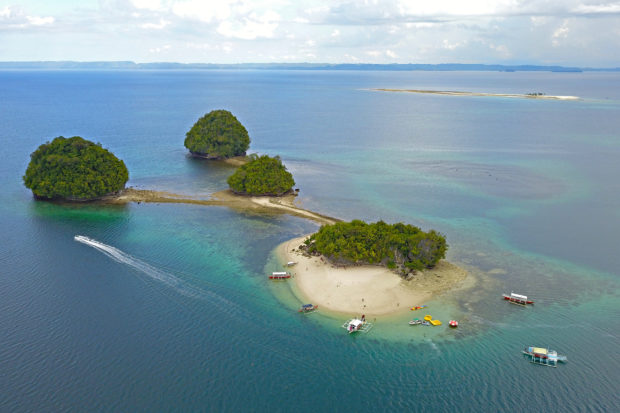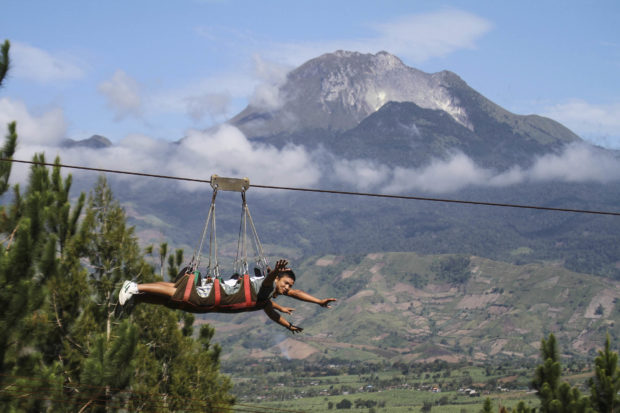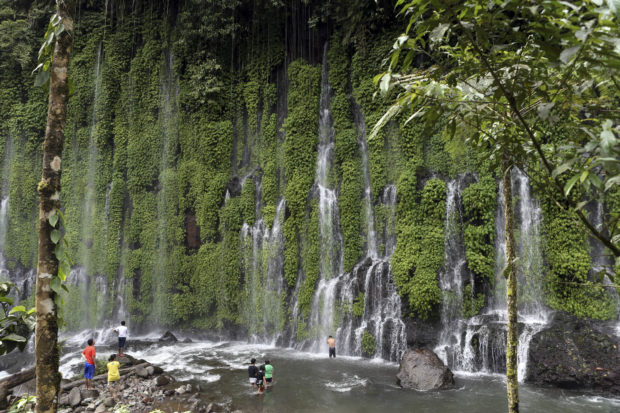Rebooting Mindanao tourism
DAVAO CITY, Davao del Sur, Philipines — As the Marco Polo Hotel ceases operation on June 15, albeit temporarily, a chapter of the city’s economic history closes.
Opened in 1998, the 245-room, 18-story hotel is Mindanao’s first and only five-star hotel by the Department of Tourism (DOT) standard.
In the past 22 years, it has become the symbol of strength of the Davao tourism industry. Its closure signifies the serious blow that the coronavirus pandemic has brought to the industry.
Francis Ledesma, president of Halifax Davao Hotel Inc., which owns Marco Polo, said there was nothing definite yet when the hotel would reopen. “We [do] not know what will happen next,” he said.
Ledesma said the hotel lost a “sizable amount” that management decided to stop the bleeding and, instead, take care of its 270 workers by providing a good severance package.
Given the attractions and amenities it can offer, Davao City has been a major host for regional and national events, both by the public and private sectors.
Article continues after this advertisementKnown as the meetings, incentives, conferences and exhibitions (MICE) segment of tourism, these events drive the influx of tourists into the city that also spills over into other areas in the region.
Article continues after this advertisementArturo Milan, Mindanao regional governor of the Philippine Chamber of Commerce and Industry, said the MICE market was a major portion of the city’s economy.
In the 11 months of 2019, tourist receipts in the city amounted to P51 billion, generated from some 2.34 million arrivals. This almost doubled in just four years, from P26.2 billion in 2015.
Regina Rosa Tecson, city tourism operations officer, said bulk of the income came from the MICE segment.
Even the series of powerful earthquakes that struck central Mindanao in October and December last year did not dampen the growth of local tourism through events, except for some cancellations.

PERFECT SUMMER Britania Islands in San Agustin, Surigao del Sur province, is for visitors looking for the perfect summer combination of sun, white sand beach and clear waters. —ERWIN MASCARIÑAS
Sudden impact
Throughout the Davao region, the goal for 2019 was 4.3 million arrivals, factoring in the increased flights, said Tanya Rabat-Tan, the DOT regional director.
Tecson said they were targeting a 10-percent growth in arrivals in the city in 2020, buoyed by its supposed hosting of the Philippine MICE Conference, which would gather key industry players in the country and abroad.Then the pandemic.
Large gatherings were called off, in keeping with health protocols. With community quarantine, airports were closed and travel for leisure was banned.
Milan said the impact of the pandemic on tourism was immediate. “Accommodations were canceled, so naturally hotels and restaurants ended up empty-handed,” he said.
Many hotels had either shut down temporarily, downsized, or refocused operations into catering and food takeouts.
In a sudden, the industry was gasping for survival.

APO VIEW A bonus for thrillseeking tourists trying a zip line in the village of Kapatagan in Digos City is a view of Mt. Apo’s peak. —KARLOS MANLUPIG
Foregone revenues
Tourism is a major factor in diversifying northern Mindanao’s economic base that has been dependent on manufacturing, agriculture and retail.
Like Davao City, Cagayan de Oro City is also a major MICE destination, hosting at least 400 events every year. It has close to 5,000 rooms in different hotels and can host a single gathering of 3,000 people.
According to the Regional Development Report 2018 prepared by the National Economic and Development Authority (Neda), the increase in tourists in northern Mindanao between 2016 and 2017 generated 10,000 jobs.
These were mostly in Cagayan de Oro and Iligan cities, and the island province of Camiguin.
Throughout the quarantine from March 15 to May 15, the industry in the region lost P1.44 billion, according to Neda regional director, Mylah Faye Cariño.
These were foregone revenues that could have been earned by the region’s 5,000 establishments engaged in tourism-related services.
Driven by locals
Other MICE destinations in Mindanao are General Santos and Zamboanga cities.
Beyond the hosting of events, the growth of tourism in other areas of Mindanao rests mainly on being leisure destinations. The alluring islands of Samal, Siargao and Camiguin are typical examples.
Increasing number of people is also drawn to the coastal hideaways of Zamboanga, Dapitan and Mati cities, and Davao Oriental, Misamis Oriental, Surigao and Sarangani provinces.
The mountain resorts of Bukidnon and Cotabato provinces, the most popular route to Mt. Apo, the country’s highest peak, have also attracted visitors.
Most of these tourists are locals. In 2018, 15.5 million tourists visited Mindanao. Of these, foreigners accounted for 372,000, or just 2.4 percent.
In Siargao, however, foreigners accounted for 48 percent of the island’s 200,000 visitors in 2019.
With this picture of arrivals, it was not surprising that as of February, Mindanao tourism executives were still bullish about a thriving industry.

COTABATO GEM People who endure the long and rough trip to AsikAsik Falls in Alamada, Cotabato, are rewarded with a jawdropping natural landscape. —JEOFFREY MAITEM
Staying afloat
Their outlook changed when the virus started spreading a month later. Today, they are back in the drawing board, trying to plot how to make the industry stay afloat.
“Industry stakeholders do not know what to do now; no one is prepared for the pandemic,” Milan noted.
The decision of Marco Polo Hotel to close reflects the hardship in discerning bright prospects in the MICE market that used to drive the tourist influx in Davao, Cagayan de Oro, General Santos and Zamboanga cities.
This leaves leisure tourism as the opportunity for rebound. Areas with natural attractions are in a good position to take this path, such as the traditional island hideaways of Camiguin, Siargao and Samal.
But a recent nationwide survey done by Neda showed that only 24 percent of respondents expressed interest to travel when restrictions were eased.
Mary Jean Camarin, the DOT Caraga regional director, said tourism businesses were awaiting guidelines from the National Inter-Agency Task Force on Emerging Infectious Diseases so they could begin planning for adjustments in industry practices.
What is clear, so far, is that the capacity of facilities to accommodate guests will need to be redrawn under the new normal, according to Camarin.

VOLCANOES AND MORE Forests, waterfalls, sandbar and unspoiled beaches are major attractions of Camiguin, an island province in northern Mindanao featuring seven volcanoes. —ERWIN MASCARIÑAS
‘Nature-tainment’
For Milan, the crisis must be a time for rethinking a good reboot strategy. One, he said, was refocusing on domestic tourism.
The drive for foreign tourists is mainly to cash in on their high spending, which is usually twice what locals spend. Almost half of Mindanao’s foreign tourist arrivals are in the Davao region.
In terms of tourist receipts, Siargao is highly dependent on its 80,000 foreign visitors annually.
Milan also pointed to agritourism which, he said, could boost both the tourism and agriculture sectors.
Davao has the Malagos Garden Resort, which is renowned for its chocolate processing. Another is the “nature-tainment” project Agriya in Panabo City, Davao del Norte province, which features banana farming and vegetable gardening.
Dozens of farm tourism sites have also sprouted in northern Mindanao, many of them in Bukidnon that are operated by families and cooperatives.
“We can only hope for the best,” Milan said.
—With a report from Erwin Mascariñas
For more news about the novel coronavirus click here.
What you need to know about Coronavirus.
For more information on COVID-19, call the DOH Hotline: (02) 86517800 local 1149/1150.
The Inquirer Foundation supports our healthcare frontliners and is still accepting cash donations to be deposited at Banco de Oro (BDO) current account #007960018860 or donate through PayMaya using this link.